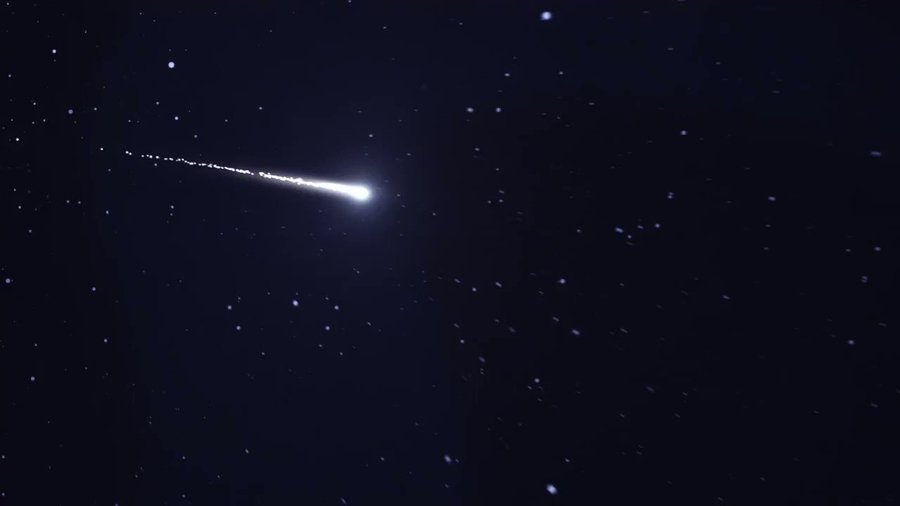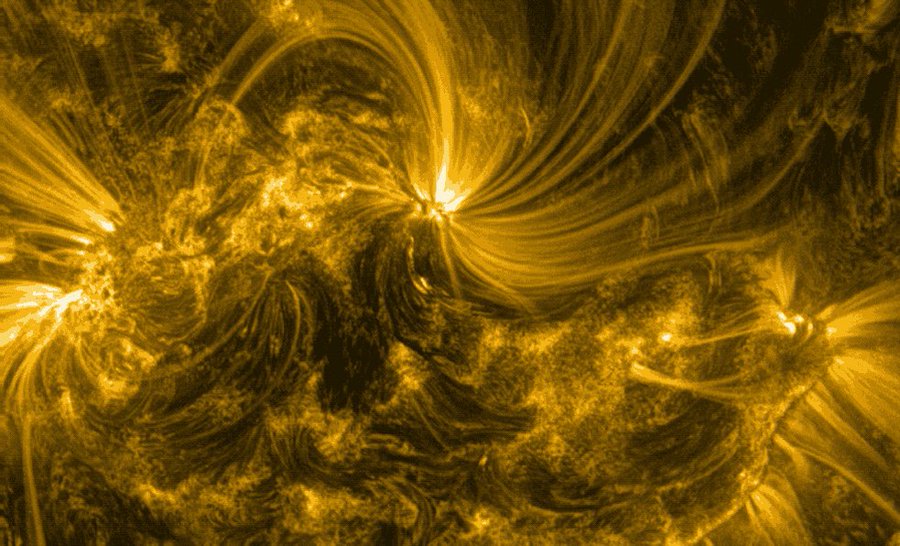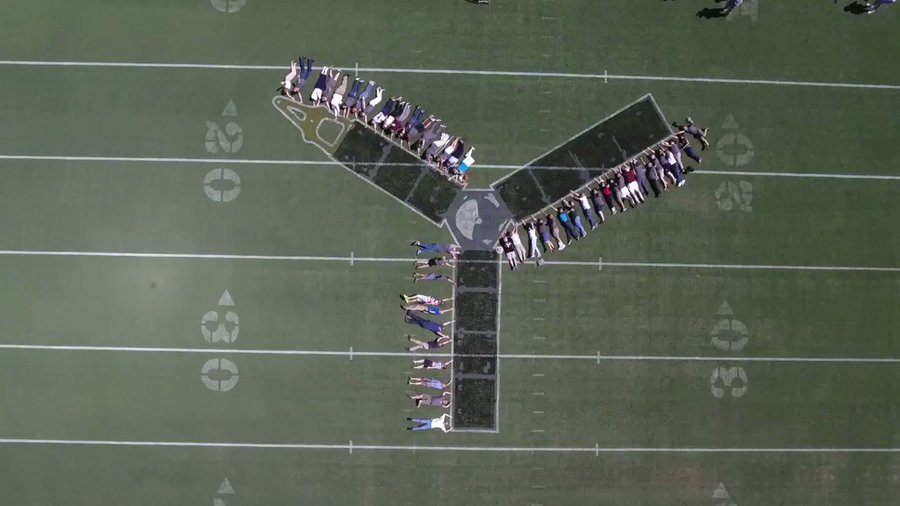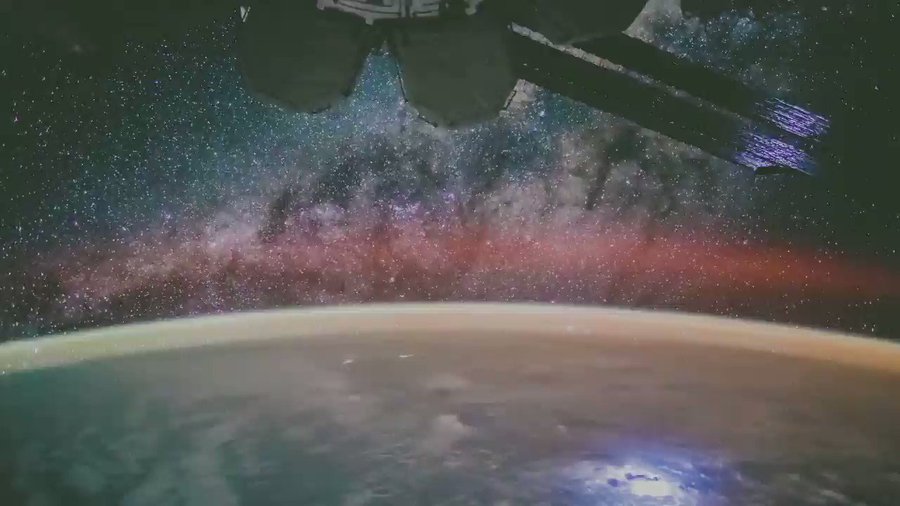Mar 16, 2021
NASA’s Juno Reveals Dark Origins of One of Jupiter’s Grand Light Shows

This illustration depicts ultraviolet polar aurorae on Jupiter and Earth. While the diameter of the Jovian world is 10 times larger than that of Earth, both planets have markedly similar aurora.Credits: NASA/JPL-Caltech/SwRI/UVS/STScI/MODIS/WIC/IMAGE/ULiège
The gas-giant orbiter is illuminating the provenance of Jovian polar light shows.
New results from the Ultraviolet Spectrograph instrument on NASA’s Juno mission reveal for the first time the birth of auroral dawn storms – the early morning brightening unique to Jupiter’s spectacular aurorae. These immense, transient displays of light occur at both Jovian poles and had previously been observed only by ground-based and Earth-orbiting observatories, notably NASA’s Hubble Space Telescope. Results of this study were published March 16 in the journal AGU Advances.
First discovered by Hubble’s Faint Object Camera in 1994, dawn storms consist of short-lived but intense brightening and broadening of Jupiter’s main auroral oval – an oblong curtain of light that surrounds both poles – near where the atmosphere emerges from darkness in the early morning region. Before Juno, observations of Jovian ultraviolet aurora had offered only side views, hiding everything happening on the nightside of the planet.
“Observing Jupiter’s aurora from Earth does not allow you to see beyond the limb, into the nightside of Jupiter’s poles. Explorations by other spacecraft – Voyager, Galileo, Cassini – happened from relatively large distances and did not fly over the poles, so they could not see the complete picture,” said Bertrand Bonfond, a researcher from the University of Liège in Belgium and lead author of the study. “That’s why the Juno data is a real game changer, allowing us a better understanding what is happening on the nightside, where the dawn storms are born.”
Researchers found dawn storms are born on the nightside of the gas giant. As the planet rotates, the soon-to-be dawn storm rotates with it into the dayside, where these complex and intensely bright auroral features grow even more luminous, emitting anywhere from hundreds to thousands of gigawatts of ultraviolet light into space. The jump in brightness implies that dawn storms are dumping at least 10 times more energy into Jupiter’s upper atmosphere than typical aurora.This video clip depicts the evolution of a dawn storm in Jupiter’s polar aurorae.
The imagery for the video was collected using data from the from the Ultraviolet Spectrograph instrument aboard NASA’s Juno spacecraft.
Credits: NASA/JPL-Caltech/SwRI/UVS/ULiège
“When we looked at the whole dawn storm sequence, we couldn’t help but notice that they are very similar to a type of terrestrial auroras called substorms,” said Zhonghua Yao, co-author of the study at the University of Liège.”
Substorms result from brief disturbances in the Earth’s magnetosphere – the region of space controlled by the planet’s magnetic field – that release energy high into the planet’s ionosphere. The similarity between terrestrial and Jovian substorms is surprising because the magnetospheres of Jupiter and Earth are radically different. On Earth, the magnetosphere is essentially controlled by the interaction of the solar wind – the stream of charged particles flowing from the Sun – with Earth’s magnetic field. Jupiter’s magnetosphere is mostly populated by particles escaping from the volcanic moon Io, which then get ionized and trapped around the gas giant via its magnetic field.
These new findings will allow scientists to further study the differences and similarities driving the formation of aurora, providing a better understanding how these most beautiful of planetary phenomena occur on worlds both within our solar system and beyond.
“The power that Jupiter possesses is amazing. The energy in these dawn aurorae is yet another example of how powerful this giant planet really is,” said Scott Bolton, principal investigator of Juno from the Southwest Research Institute in San Antonio. “The dawn storm revelations are another surprise from the Juno mission, which is constantly rewriting the book on how giant planet’s work. With NASA’s recent mission extension, we’re looking forward to many more new insights and discoveries.”
More About the Mission
JPL, a division of Caltech in Pasadena, California, manages the Juno mission for the principal investigator, Scott J. Bolton, of the Southwest Research Institute in San Antonio. Juno is part of NASA’s New Frontiers Program, which is managed at NASA’s Marshall Space Flight Center in Huntsville, Alabama, for the agency’s Science Mission Directorate in Washington. Lockheed Martin Space in Denver built and operates the spacecraft.
More information about Juno is available at:
https://www.missionjuno.swri.edu
Follow the mission on Facebook and Twitter at:
https://www.facebook.com/NASASolarSystem
Tweets by @NASASolarSystem
NASA Solar System RetweetedNASA Mars✔@NASAMarsWe know the desert landscapes of Mars once flowed with rivers and lakes. So where did all the water go? New research adds more information to the debate, with evidence that most of that water is trapped in the crust rather than having escaped into space: https://go.nasa.gov/3vugwwf- NASA Solar System✔@NASASolarSystemA storm at dawn: Our #JunoMission has revealed the origins of one of Jupiter’s grand light shows. See the details at https://www.missionjuno.swri.edu/news/juno-reveals-origins-to-one-of-jupiter-s-grand-light-shows …
- NASA Solar System✔@NASASolarSystemThousands of asteroids are nameless. #LucyMission asteroid fans saw an opportunity. Now, 27 are named after pioneering astronauts, and one cosmonaut, who have expanded our horizons beyond Earth. Check out the full list here: https://go.nasa.gov/3eKpI9S
- NASA Solar System✔@NASASolarSystemGood morning, old friends: Jupiter and Saturn are visible in the sky once again, this time in the east around dawn. More skywatching tips: https://go.nasa.gov/34hp376
- NASA Solar System RetweetedNASAJPL Edu✔@NASAJPL_EduThe answers to the 2021 #NASAPiDayChallenge are here! http://go.nasa.gov/piday
Tell us how you did in the comments.
Missed this year’s challenge? It’s never too late to start exploring with pi. Find the complete collection of pi math problems at the link above. #PiDay - NASA Solar System✔@NASASolarSystemWe’re delighted to be the new official Twitter home for #OSIRISREx, our first mission to collect an asteroid sample. We’ll update you as the spacecraft:
 Flies by the sample site
Flies by the sample site Departs asteroid Bennu
Departs asteroid Bennu Returns to Earth
Returns to Earth Drops off the Sample Return Capsule#ToBennuAndBack
Drops off the Sample Return Capsule#ToBennuAndBack - NASA Solar System RetweetedNASAJPL Edu✔@NASAJPL_EduWe’re counting down to
 #PiDay
#PiDay with the math problems we use to explore space at @NASA.
with the math problems we use to explore space at @NASA.
Can you calculate how many of @OSIRISREx‘s circular sample pads had to touch the asteroid Bennu to meet the mission goal.
Take the #NASAPiDayChallenge at http://go.nasa.gov/piday - NASA Solar System✔@NASASolarSystemSolar energetic particles can harm electronics & astronauts in space, but their onset is hard to predict. Now, scientists have traced three of these particle bursts back to their source — a step that could help scientists begin to forecast these events. https://go.nasa.gov/30AuMp3
- NASA Solar System✔@NASASolarSystemWhat are you doing on #PiDay (Sunday, 3/14)? It’s a chance to enjoy some delicious pie, sure, but also a good time to learn how we use math @NASA to explore places like Jupiter with our #JunoMission.


‘Pi in the Sky’: http://go.nasa.gov/3td2ahF
More: http://go.nasa.gov/piday - NASA Solar System✔@NASASolarSystemLearn more about the story of the Galileo mission at http://solarsystem.nasa.gov/galileo https://twitter.com/NASAAmes/status/1370159433825812483 Galileo – OverviewGalileo was designed to make the first study of Jupiter and its moons and magnetosphere from orbit. The orbiter carried 10 science instruments and a atmospheric probe.solarsystem.nasa.gov
- NASA Solar System✔@NASASolarSystemAnother fascinating comparison between worlds in our solar system and one far beyond. https://twitter.com/NASAExoplanets/status/1370104609176387586
- NASA Solar System✔@NASASolarSystemAn asteroid will speed safely past Earth on March 21, providing astronomers a rare opportunity to get a good look at a relic from the dawn of our solar system. Learn more: https://go.nasa.gov/2Ofcrvf
- NASA Solar System RetweetedNASA Mars✔@NASAMarsA distant, lonely wind…interrupted only by the sounds of laser strikes. @NASAPersevere’s SuperCam instrument has recorded the sound of wind on Mars, along with the laser used to gather information about the structure of rocks in Jezero Crater. Listen in: https://go.nasa.gov/37ec6PF
- NASA Solar System RetweetedNASA Moon✔@NASAMoonWe’ve all been there – sitting on the floor surrounded by unassembled furniture, scratching our heads. To avoid such a situation for our next Moon rover, a team at @NASA_Johnson will spend the next few months building a test model of VIPER. https://go.nasa.gov/3bw3Ywn NASA Practices VIPER Moon Rover Assembly in New Clean RoomNASA’s water-hunting lunar robot, VIPER, has a workspace prepped and ready, where the first activity will be the assembly of a full-scale replica of the rover.nasa.gov
- NASA Solar System✔@NASASolarSystemThe #JunoMission to Jupiter has made an unexpected discovery about a different planet – Mars. Juno scientists have found evidence that dust from the Red Planet may be the source of a luminous sky phenomenon known as the zodiacal light: https://www.missionjuno.swri.edu/news/juno-detections-shatter-ideas-about-origin-of-zodiacal-light …
- NASA Solar System RetweetedNASA Exoplanets✔@NASAExoplanetsAs humanity casts an ever-wider net across the cosmos, capturing evidence of thousands of worlds, an ancient question helps propel us: Is anybody out there? https://go.nasa.gov/3t0sH1N
- NASA Solar System RetweetedNASA Earth✔@NASAEarthThirty-two spectacular photographs

All taken by astronauts


Are ready for #TournamentEarth.
Are you? VOTE: https://go.nasa.gov/2UjcINH
- NASA Solar System✔@NASASolarSystemEven asteroids have night and day. This image of asteroid Bennu was taken by our #OSIRISREx spacecraft on March 4 from a distance of about 186 miles (300 km) above Bennu’s north pole. #ToBennuAndBack https://bit.ly/2OCP3Y2
- NASA Solar System RetweetedNASA Expeditions✔@NASAExpeditionsWhat better way to celebrate #InternationalWomensDay than following along with #NASAExplorers who have broadened our view of Earth, the Moon, and beyond? #IWD2021https://www.facebook.com/watch/304936563447063/1169283546837060 …
- NASA Solar System✔@NASASolarSystemDonya Douglas-Bradshaw’s advice? Be purposeful. Douglas-Bradshaw (on the left) is the project manager for the #LucyMission, which will launch later this year and travel to the Trojan asteroids – asteroids that lead and follow Jupiter in its orbit around the Sun. #IWD2021
Load more Tweets
via Watts Up With That?
March 17, 2021 at 12:38AM








You must be logged in to post a comment.